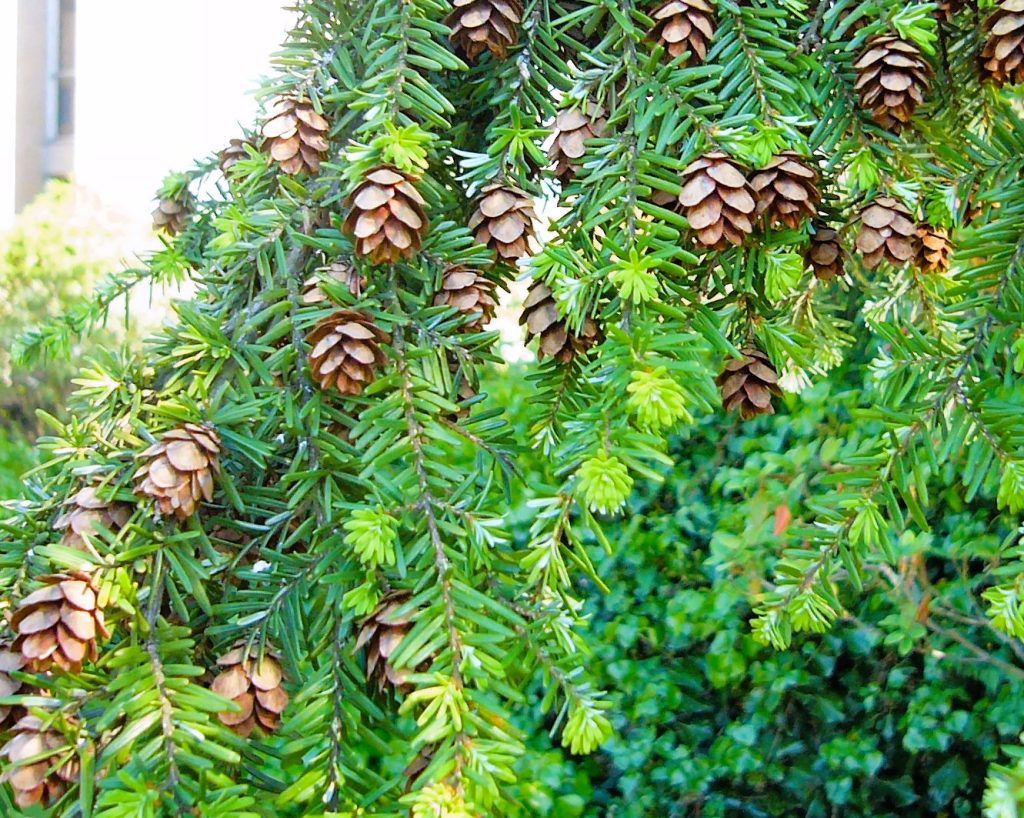Tsuga heterophylla: The Pacific Hemlock

Introduction
Tsuga heterophylla, commonly known as the Pacific Hemlock or Alberta Hemlock, stands as a majestic tree species native to the northwest region of North America. Ranging from the Kenai Peninsula in Alaska to the northern part of Sonoma County, California, this evergreen conifer is renowned for its towering height and ecological significance. This article delves into the care, longevity, common pests, diseases, and more associated with the Pacific Hemlock.
Young Pacific Hemlock Tree.
Description
The Pacific Hemlock is a large evergreen conifer that reaches heights of 50-70 m, occasionally soaring to an impressive 78 m. Slightly taller than its counterpart, the Canadian Hemlock, it boasts a trunk diameter of up to 2.7 m. The bark is thin, brown, and furrowed.
Closely linked to temperate rainforests, most Pacific Hemlocks thrive within 100 km of the Pacific Ocean. However, populations are also found inland in the Rocky Mountains, southeastern British Columbia, northern Idaho, and western Montana. Its growth range spans from sea level up to 600 m above sea level, occasionally reaching 1,800 m above sea level in Idaho.
Care for Pacific Hemlock
Soil and Sunlight
- Flourishes in well-drained soil.
- Prefers partial to full shade.
Watering
- Requires regular watering, especially in dry periods.
Pruning
- Prune sparingly to maintain a natural shape.
Longevity
Pacific Hemlocks showcase impressive longevity, with optimal care ensuring a lifespan that allows them to thrive for several decades.
Common Pests and Diseases
Pests:
- Aphids: Regularly inspect for aphids, especially during the growing season.
- Spider Mites: Keep an eye out for spider mites; a healthy environment discourages their presence.
Diseases:
- Root Rot: Avoid overwatering to prevent root rot.
- Needle Blight: Monitor for needle blight symptoms, applying appropriate treatments if detected.
Geographic Distribution
The northwest region of North America, from the Kenai Peninsula in Alaska to northern Sonoma County, California, encompasses the natural habitat of the Pacific Hemlock.
Conclusion
In conclusion, Tsuga heterophylla stands as a vital component of the temperate rainforests of the Pacific Northwest. Its towering stature, coupled with proper care, makes it an invaluable addition to landscapes. Vigilance against potential pests and diseases ensures the sustained health and longevity of this iconic evergreen species.

Leave a Reply
You must be logged in to post a comment.